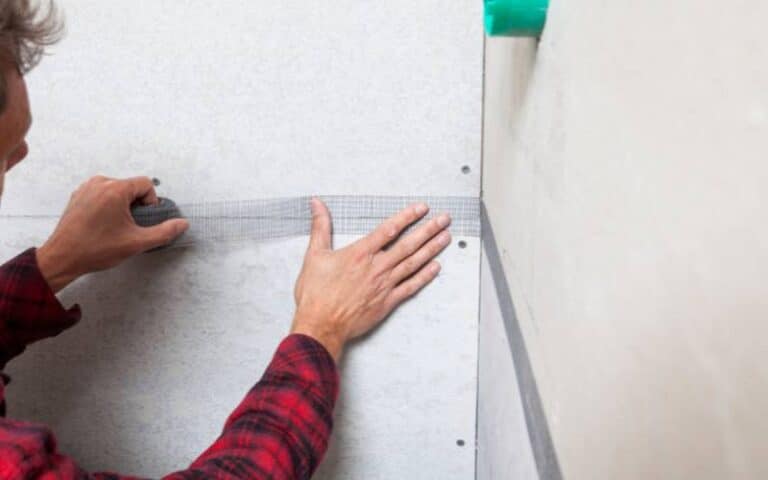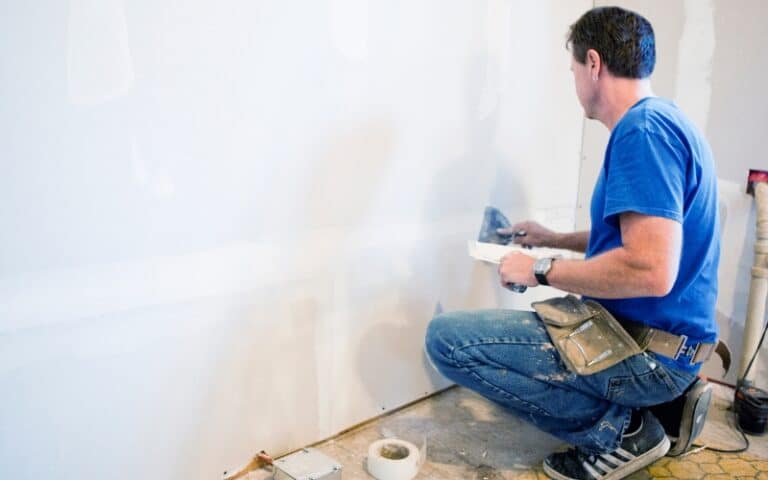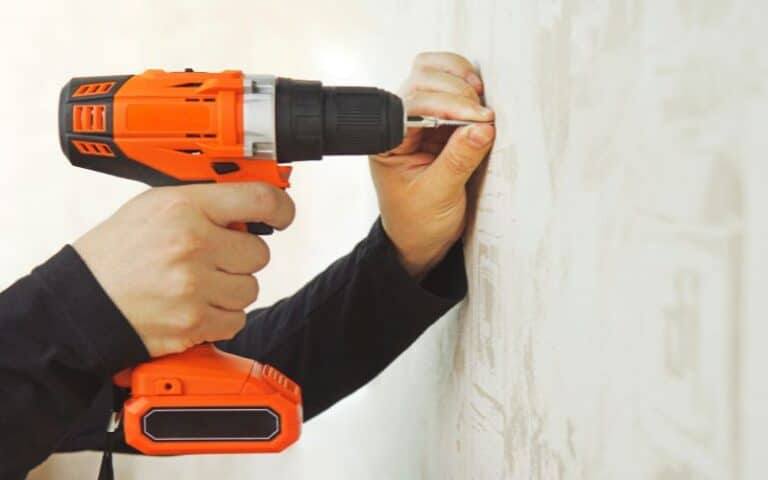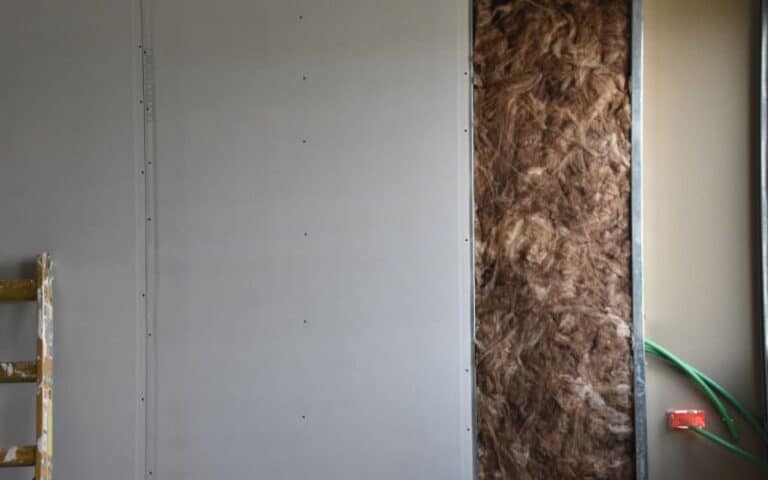When working on drywall, you wonder what power tool to use that will give your wall an excellent finish. Fortunately for you, there are a few options available in that area.
You know you aren’t doing a heavy-duty task. Plus, it is also cheaper than other sanders, so you are still determining whether or not this will give you what look you’re aiming for.
So this leads you to question whether or not you can use palm sander on drywall.
Yes, you can use a palm sander on drywall, but you should be careful when selecting sandpaper grit not to damage the wall. Also, ensure you use safety glasses and a respirator so the dust bomb from the drywall doesn’t affect your lungs. However, it is generally easy for a beginner to use a palm sander when sanding the drywall.
In this article, I’ll explain whether or not you can use a palm sander on drywall. I’ll then further explain which sander is the best for drywall and the easiest way to do it.
By the end, you’ll know if you can use a palm sander on your drywall. Also, you’ll know the easiest way to sand your drywall.
Ready for a Drywall Quiz?
Can I Use a Palm Sander on Drywall?
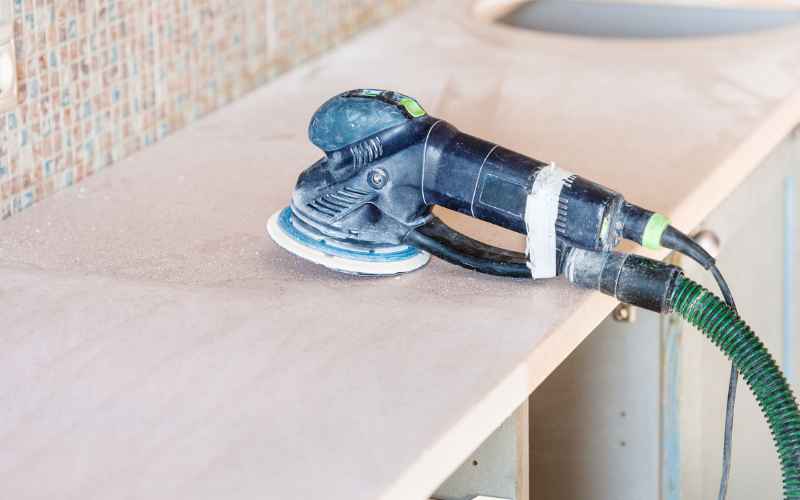
Yes, you can use a palm sander on drywall. However, it is suitable when working on small jobs, and it will be stressful when working on a vast drywall project.
Also, you have to consider sandpaper grit on your palm sander so as not to roughen the finish of the drywall.
For example, if you need a smooth fish and use coarse grit sandpaper, you can damage the finish of the drywall. For a DIY, it can devalue your home’s price because you didn’t do it well.
Working on a massive project will take a long time, and other sanders are more suited to this heavy-duty work.
Besides, working with palm sander leaves you exposed to the dust from working with drywall. Therefore, I advise you use a respirator and safety glasses to protect yourself from exposure to it.
That’s because the dust is harmful to your health. The great thing about using a palm sander on drywall is that you can sand the edges and joints properly because of the palm sander’s size.
You get to access where it is difficult, like the inside with a palm sander, than when using another bigger sander.
Plus, it isn’t too expensive to purchase and is easier to use if you’re a DIY with little experience.
Depending on the type of palm sander you use on your drywall, it might take time to finish it. You can only move a little with it using the ones powered by corded electricity.
Also, if you use a cordless model and sand an extensive drywall and the battery runs out, you must wait until it charges. After that, you can continue your work which will take more time.
What Kind of Sander Is Best for Drywall?
There are a few sanders I recommend as the best for drywall. However, it would be best if you went for the electric sanders.
First, however, here’s my recommendation for the best drywall sander.
#1. WEN 6377 Drywall Sander
It is durable and affordable, with a variable speed between 600rpm and 1,500rpm and power of 5A, 600W. It has a flexible hose stretching up to 15 feet.
The downside of the WREN Drywall sander is that it is pretty heavy and has no dust bag.
#2. Dewalt Cordless Drywall
Dewalt stands out because it can work without electricity for a while; however, you can get spare batteries to last longer. Its speed is between 700 to 1,200 rpm.
If you add the vacuum, you can remove the dust generated by the drywall. However, this sander is quite expensive but excellent.
#3. Yattich Electric Sander
This sander has an aluminum extension rod of 3.9 to 5.5 feet, making the roof sanding easier. It has a maximum motor speed of 1750 adjustable RPM.
However, before making those recommendations, I considered some factors. Take, for instance, the size of the drywall you want to sand, the required sander, etc.
The factors below show what to look for when choosing the sander best for your drywall.
- Drywall sander type.
- Motor power and speed.
- Flexibility
#4. Drywall Sander Type
You can use the manual sanding route when selecting the best sander for your drywall. However, it will be a little stressful because of its size, but these sanders are easily accessible.
So, the obvious choice is to go for electric sanders. You can use the cord or cordless sanders, which you can choose to attach to a pole to do your sanding.
For example, you can use a self-contained dustless orbital drywall sander which will do the work faster and cleaner.
#5. Motor Power and Speed
The speed and power of a sander motor are essential in choosing a sander. If you have a powerful motor, it increases the efficiency of the sander.
Look for motors with at least 5amps and 600 watts or more to achieve this. Also, check the battery’s capacity so you can work for a long time without charging for a while.
To get a good speed for your electric sander, choose a sander with a higher motor speed. However, this depends on the model.
#6. Flexibility
It is crucial when selecting a sander because you need to move around while working on drywall without the sander being too short.
It would help to choose a sander that isn’t too heavy because you might have to carry it for a long time and above your shoulder length.
What Is the Easiest Way to Sand Drywall?
The orbital sander is the easiest way to sand your drywall. That’s because the orbital sander is lightweight, and you can use it for extensive drywall work.
Not only is this tool light, but it is also fast. However, when using this sander, you should be careful with the sandpaper grit not to damage the drywall’s surface.
The table below shows different levels of coarseness for sandpaper grit.
| Grit | Meaning |
|---|---|
| 20-36 | Coarse |
| 40-60 | Medium |
| 150-180 | Fine |
| 240-400 | Very fine |
You should know that as the number increases, the fineness level of the grit increases. However, using a “very fine” sandpaper grit isn’t good when sanding your drywall.
When you sand the joint compound off the drywall, you should use a grit of 150-180, then apply light pressure. Do that in a circular motion and gently so the surface can be smooth.
Do it till the surface is smooth and there are no dips in the drywall.
What Is the Difference Between a Drywall Sander and Orbital Sander?
The major difference between a drywall sander and an orbital sander is the amount of sanding jobs they can do.
Therefore, you use a drywall sander for more extensive sanding than an orbital sander.
Drywall sanders are for smoothening out holes and corners on joint compounds applied to your drywall. You use the drywall sander for bigger drywall jobs.
However, when talking about an orbital sander, you use it for smaller sanding jobs. It is also known as a palm sander.
There are three types of orbital sander known as; electric orbital sander, air-powered, and floor orbital sander.
The types of drywall sanding include manual, dustless power sander, and sponge sanding. However, you use both orbital and drywall sanders to smoothen the surface of the drywall.
An orbital sander is less expensive than a drywall sander. After the sanding process, you can go ahead with the painting.

